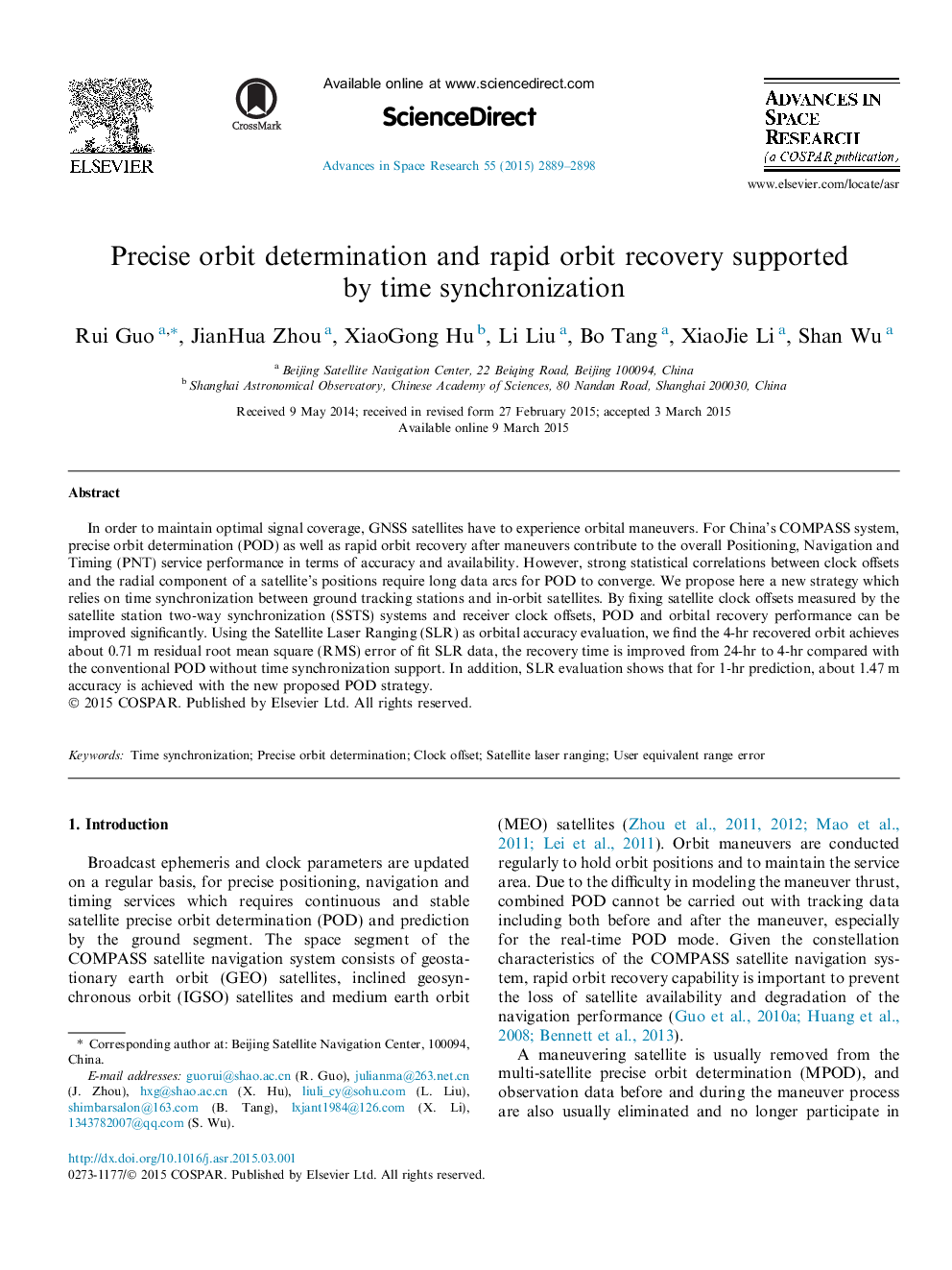| Article ID | Journal | Published Year | Pages | File Type |
|---|---|---|---|---|
| 10694158 | Advances in Space Research | 2015 | 10 Pages |
Abstract
In order to maintain optimal signal coverage, GNSS satellites have to experience orbital maneuvers. For China's COMPASS system, precise orbit determination (POD) as well as rapid orbit recovery after maneuvers contribute to the overall Positioning, Navigation and Timing (PNT) service performance in terms of accuracy and availability. However, strong statistical correlations between clock offsets and the radial component of a satellite's positions require long data arcs for POD to converge. We propose here a new strategy which relies on time synchronization between ground tracking stations and in-orbit satellites. By fixing satellite clock offsets measured by the satellite station two-way synchronization (SSTS) systems and receiver clock offsets, POD and orbital recovery performance can be improved significantly. Using the Satellite Laser Ranging (SLR) as orbital accuracy evaluation, we find the 4-hr recovered orbit achieves about 0.71Â m residual root mean square (RMS) error of fit SLR data, the recovery time is improved from 24-hr to 4-hr compared with the conventional POD without time synchronization support. In addition, SLR evaluation shows that for 1-hr prediction, about 1.47Â m accuracy is achieved with the new proposed POD strategy.
Related Topics
Physical Sciences and Engineering
Earth and Planetary Sciences
Space and Planetary Science
Authors
Rui Guo, JianHua Zhou, XiaoGong Hu, Li Liu, Bo Tang, XiaoJie Li, Shan Wu,
